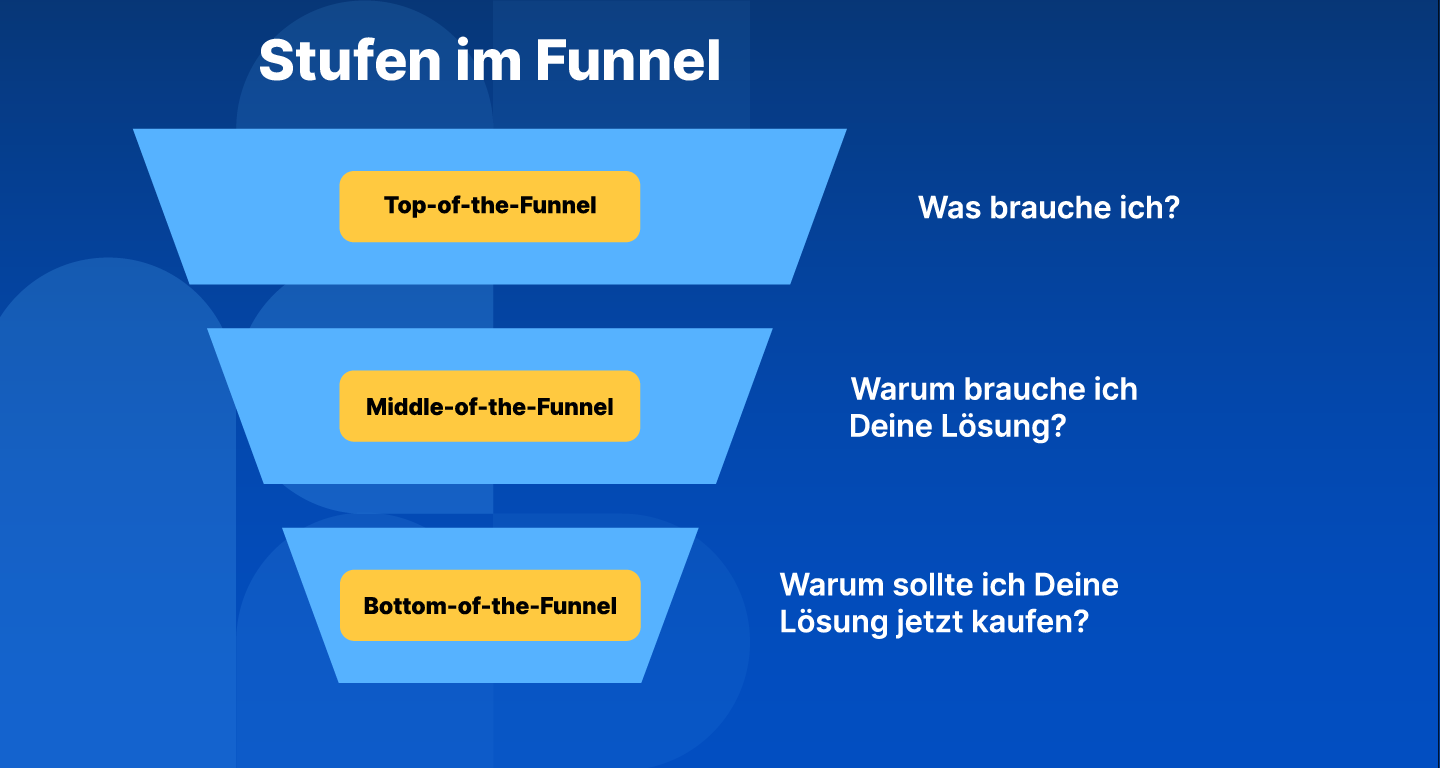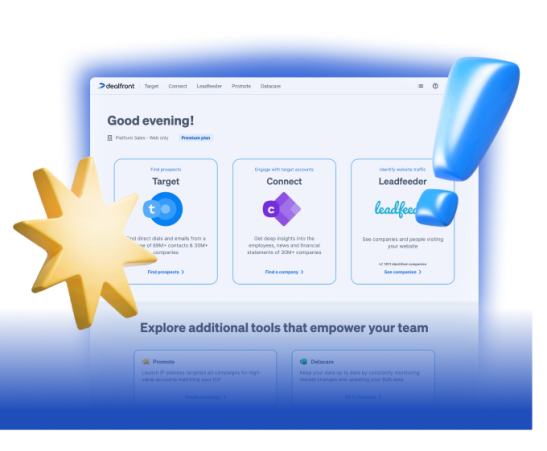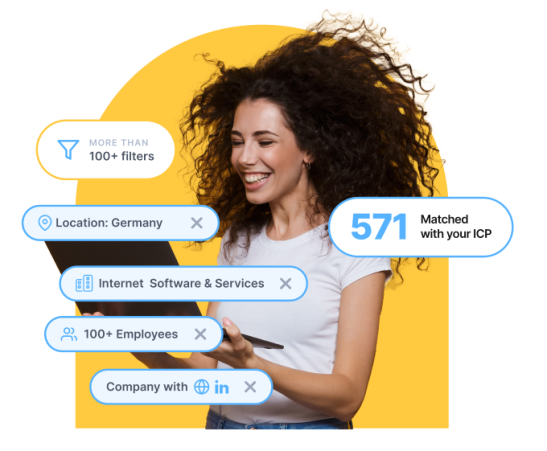When it comes to scaling B2B SaaS companies, you need to know which go-to-market strategy to adopt. You have sales-led and a product-led approach, but which one will work best for your business? Both strategies promise growth, but the decision ultimately boils down to the complexity of your product.
By the time you’re done reading this article, you’ll understand:
What sales-led growth is
The differences between product-led vs. sales-led growth
What the sales-led growth strategies are
So, let’s take a look at what exactly a sales-led growth strategy is by breaking it down:
Sales-led growth strategy 101
Being sales-led means your company’s priority is utilizing the skills and efforts of its sales team to bring in new customers. SaaS companies that adopt a sales-led growth model typically offer complex products or services that require specialized knowledge and hands-on training.
They emphasize building a skilled sales team, concentrating on recruiting and training high-performing sales professionals. These companies also establish efficient sales cycles and allocate the necessary resources to support their efforts.
One notable characteristic of the sales-led growth model is that the sales team is granted considerable autonomy and flexibility. They are free to pursue leads and close deals using their preferred methods.
This approach aligns with the conventional marketing funnel, where leads go through a qualification process. First, they become MQL (marketing-qualified leads) and then SQL (sales-qualified leads). The marketing team hands over sales-qualified leads to the sales team, who takes charge of nurturing and converting them into customers.
Product-led vs. sales-led growth: What’s the difference?
PLG (product-led growth) and SLG (sales-led growth) are two distinct approaches to business expansion. Each has its strengths and suitability for specific products and target markets. While a product-led approach emphasizes developing a user-friendly and intuitive product, SLG relies heavily on the expertise of a dedicated sales team. But that’s not all.
Below, we walk through the differences between SLG and PLG.
Sales-led growth strategy
Although there are many things that your sales team is responsible for, there are many important touchpoints that involve other teams. Working together cross functionally ensures maximum success for your SLG strategy.

Other teams and their areas of responsibility:
Building awareness: Marketing provides the necessary information about the company and its offering to enable clients to become knowledgeable users. Marketing creates educational assets and executes campaigns to increase awareness.
Hands-on customer experience: An account executive's role is to seal the deal. Also they have the responsibility to build a relationship with the client. The success of this relationship relies on the effectiveness of communication between them and the customers.
Customer support: The customer support team offers assistance and resolves client issues promptly and effectively. They also focus on strategies that contribute to keeping existing users satisfied and loyal while implementing measures to encourage customer retention.
Customer success: Customer success helps new customers get started and familiarize themselves with the company’s products or services (onboarding). They also help to cross-sell and upsell. They ensure that customers derive maximum value and benefits from using the company's products or services.
Now that you have all the facets of a sales team they’re going to need a process to get prospects from point A to point B.
The Sales funnel: Guiding the customer on their buyer’s journey
From becoming aware of your brand at the beginning of the funnel to when they sign a contract right at the bottom, your customer makes several touchpoints with your sales team (and marketing team) along the way. Each stage should be carefully planned to capture interest at exactly the right moment so your prospect can be moved to the next stage.
In its simplest form, the sales funnel looks like this:

Let's break down each stage of the funnel:
Top of the funnel (TOFU) comprises of the awareness and discovery phases. Here, your prospects become aware of your brand and its offerings through marketing activities and where the sales team will actively prospect for leads. In the discovery phase, you'll be qualifying leads to see if they match your ideal customer profile (ICP) and will also include an initial meeting to define the prospects needs.
Middle of the funnel (MOFU) is where the customer is evaluating and showing intent to purchase. Here, you'll want to offer the prospect a demo or a free trial of your solution to help push them closer to making a decision while they compare you with the alternatives: your competitors.
Bottom of the funnel (BOFU) is where you'll enter negotiations and submit your final proposal. The customer will be comparing pricing and may need an incentive like a discount or promotion to take the final step. Each part of the funnel is important, but one phase has the potential to take a good experience and turn it into a great experience for everyone involved: the discovery phase.
Why is the discovery phase so important in SLG?
The interest phase usually happens right after the awareness phase. Here, you have a sales qualified lead (a high-quality lead that most closely matches your ideal customer profile) that has shown interest in your product.
If your sales reps are going to have more 1:1 prospect or customer interactions to drive growth, having a discussion where the rep can discover deeper insights is vital. During the discovery phase, your reps will try to uncover and understand the prospect or customer’s needs, challenges and pains.
When you can more closely-identify those things, you can show the potential customer how your product or service will bring them more value. What you learn about the customer, and what they need will allow you to personalize everything to suit their needs. From proposal to pitch!
Product-led growth strategy
Product-led companies capitalize on their products or services to generate a continuous stream of engaged leads, who are subsequently converted into loyal, paying customers. The primary objective of product-led growth is to encourage new users to pay through self-service avenues such as free trials and freemium models.
One example of a PLG SaaS company is Canva:

Source: Canva
Their freemium approach offers users access to certain features for free while providing more advanced functionalities via subscription. By allowing users to accomplish tasks at no cost initially, the freemium strategy generates market interest and acts as an effective marketing tool. It also encourages word-of-mouth promotion.
This approach helps build a substantial user base without significant investments in marketing or sales efforts. By using this model, Canva now has 110 million monthly users, close to 70% of whom are on a paid subscription.
Product-led SaaS companies believe their product is good enough to generate sales on its own merits. PLG businesses also prioritize creating a user-friendly experience for potential customers to test out their products. For this strategy to succeed, the product must effectively address a significant problem.
By eliminating the need to speak to a sales rep first, a product-led business focuses mainly on offering a great product experience. Such a business ensures that its product or service offers a straightforward and seamless onboarding and ongoing usage process.
Sales-led growth pros
SaaS brands can achieve higher revenue and market share by prioritizing sales as a growth strategy. Here are some benefits of an SLG model.
Easier onboarding
Unlike PLG companies, sales-led SaaS businesses have a person to walk you through the onboarding process and answer questions. This high-touch, personalized approach to sales and onboarding leads to higher conversion rates. It also provides a clear path toward achieving a satisfying customer experience.
Relationship building
The communication between sales reps and the client creates an ongoing relationship that is crucial to the lifetime value of that customer. That’s why customer service and support are tied to a company’s revenue. Being sales-led allows your company sufficient room to be a people-centric business, which improves retention and brand loyalty.
The role of a sales rep in SLG companies comes with a much higher level of responsibility compared to PLG companies. And that's not a bad thing! The rep will be much more driven to close, and has the freedom to tailor their approach to match their customer.
Collect customer feedback
A sales-led strategy involves creating a human-to-human connection between the sales rep and a customer. The resulting relationship enables a client to provide constructive feedback that can be used to improve the product. Sales reps are free to create thoughtful, open-ended questions when talking to a customer to source feedback.
Target larger SaaS companies
Being sales-led allows your company to target larger SaaS businesses and enterprises. These types of customers don’t have time to dedicate to the learning curve associated with most advanced IT products. Think of companies whose contracts exceed $100,000 a year or more. You want to dedicate a sales rep to such a client or risk losing them in the middle of the sales process.
Increased revenue
By focusing solely on qualified leads who are already interested in your company's offerings, a sales-led strategy results in high customer retention. This approach ensures that resources are utilized efficiently, targeting individuals who are more likely to convert into paying customers.
Awareness and visibility
Employing a sales-driven strategy allows for swift communication of the characteristics of a product and its advantages to potential customers. With product demos, sales materials, and vital product details, the onboarding process results in an informed client base.
A sales-led strategy equips new customers with a comprehensive understanding of the company’s offering and prepares them to integrate a new product into their work seamlessly.
Sales-led growth cons
Despite its prominent advantages, a sales-led strategy can work against your company in some instances. Some disadvantages of this model include:
A longer sales cycle
Sales-led strategies may experience slower growth in the beginning, as they require ample time to build relationships with potential clients. The average length of a sales cycle is 84 days. That’s almost three months spent trying to transform a lead into a paying customer.
Harder to scale
The effectiveness of a sales-led approach depends on the capacity of the sales reps. You may have a great product but fail to solve an issue within the sales cycle, which ultimately affects your conversion rate and overall growth. If only a few talented people make your sales team strong, you are always faced with the possibility of them leaving and negatively affecting productivity.
High acquisition costs
High-growth technology companies can spend anywhere from 25% to 45% of their revenue on sales. By leveraging free trials, product-led companies save money, while sales-led keep increasing their investment into marketing to beat the competition. To make this strategy profitable, the customer's lifetime value (LTV) must exceed the cost of acquiring new clients. This may result in charging higher prices to compensate for the expensive customer acquisition.
However, whichever of the approaches suits your business model and strategy more, your sales teams ultimately are still trying to lead your potential customers through the sales funnel on their customer journey.
Now that we’ve taken a closer look at the benefits and drawbacks of both the PLG and SLG models, let’s take a look at what SLG growth looks like in the real world.
Use cases: SaaS companies that use a sales-led growth strategy
The sales teams at these companies lead customers through their sales funnel. As part of their sales process, they court potential customers throughout the entire process from the top of the funnel to onboarding.
Salesforce
Salesforce knows that its products, services, and different pricing may appear complex and overwhelming to prospective customers, which could potentially deter them. To address this concern, the sales team is dedicated to providing support throughout the sales process, ensuring a smoother customer journey and an enhanced product experience.

Source: Salesforce
Salesforce provides their website visitors with various options to engage with their sales team, such as chat for immediate contact, phone numbers for direct calls, and prerecorded demos for viewing. Also, almost every subpage prompts you to reach out to a sales representative for detailed information about their solutions.
Leveraging a sales-led approach, Salesforce has a revenue of $31.4 billion with a growth of 18%.
ServiceNow
ServiceNow provides a cloud-based platform for automating IT management workflows in several industries. Their wide customer base requires a big set of soft skills and sales strategies. That’s why they sell their products through a direct sales team and indirectly through channel partners and third-party referrals.

Source: ServiceNow
The company uses events and webinars to build awareness of industry best practices. Many participants in these events are either existing users or potential leads. On their website, ServiceNow offers demo videos and contact sales buttons that direct visitors to a sales rep.
Due to their aggressive SLG model, ServiceNow recorded revenue growth of 20% in 2022 to close the year at $7.2 billion.
Oracle
As one of the world’s largest B2B SaaS companies, Oracle has many cloud applications and a wide customer base that calls for engaging human interaction. As a visitor to their website looking to try their products, you have to talk to a sales rep first. They have an automated chatbot dedicated to answering your questions or forwarding your query to a human sales rep.
Sales-led growth strategies
The two main sales strategies are inbound and outbound. The difference between the two is which party—sales team or lead—initiates contact. With outbound sales, a sales rep contacts the prospect first. With inbound sales, a potential customer reaches out to ask about a product or service.
Inbound and outbound sales strategies do have distinct differences that contribute to their individual goals and advantages. For example, research shows that 82% of people will accept a meeting with a seller who reaches out to them. At the same time, inbound leads can be up to 80% less expensive than outbound leads.
Inbound sales
The goal of inbound sales strategies is to attract leads by using marketing-created content that appeals to their needs and interests. Once a lead shows interest, the sales team focuses on crafting personalized sales messages for them.
Some effective examples of inbound sales strategies include content marketing, social media, search engine optimization (SEO), and optimizing your website.
Content marketing: By creating valuable content such as eBooks, emails, or blog posts, you can capture the attention of your target audience and drive traffic to your website.
Social media: Utilizing platforms like Facebook, LinkedIn, Twitter, and YouTube allows you to reach a large audience, even for B2B companies. Paid advertising options on these platforms can help increase brand awareness.
Search engine optimization (SEO): Optimizing your website for search engines improves its visibility and helps potential customers find you when they search for relevant keywords or phrases.
Website optimization: By enhancing the user experience, making your website easy to navigate, and ensuring it loads quickly, you can improve the chances of converting visitors into customers.
Outbound sales
Outbound sales work to actively sell a product or service. The goal is to generate interest and make consumers want to learn more about a product or service. Outbound sales require a hefty amount of resources and time because sales reps must guide prospects through the buyer’s journey to conversion.
Companies that rely on outbound sales typically have three types of sales reps.
1) Sales development reps (SDRs)
SDRs, also known as business development reps (BDRs), are salespeople who specialize in outbound sales prospecting. Their main focus is reaching out to potential customers through methods like email or social media, followed by cold calling. Rather than closing deals, SDRs aim to move leads further along the sales process.
Their role involves gathering information about prospects, understanding their business model and pain points, and determining if the product or service offered is a suitable fit.
2) Account Executives (AEs)
We've mentioned AEs in our inbound strategy and they also exist in an outbound sales strategy! SDRs are focused on the top of the funnel stage of the customers’ buying journey, account executives' main focus is to close the deal. Although they have that as a main focus, they should also be engaging with the customer at other points in the funnel. However, they would be targeting a smaller list of high-value accounts.
3) Lead response reps
On the other hand, a lead response rep is an inside sales rep responsible for following up with inbound leads generated from marketing campaigns. Despite the name, lead response reps mostly engage in outbound sales calls, which classifies them as outbound sales reps as well. They typically contact marketing-qualified leads such as individuals who have completed online forms, downloaded marketing materials, or attended webinars.
Outbound sales, although pricier than inbound strategies, offers a quicker and more precise approach with increased control and a focus on details. You specifically target individuals who are likely to be interested in your product or service, resulting in higher-quality leads. Moreover, outbound sales enables sales representatives to establish personal connections with users, cultivate relationships, and adapt their approach as needed.
Certain industries and products, especially newer solutions, tend to benefit from an outbound approach. Conversely, in some instances, building a solid brand image is crucial to attracting potential customers, making inbound sales a more suitable option.
Is sales-led growth what your business needs?
No one knows your product or service better than you. Ultimately, the case for SLG depends on your target market and business goals as well as the complexity of the sale and the ARPA (average revenue per account). The sales-led growth strategy offers your prospects and customers a more personalized journey. You’re also reducing the hurdles that customers may face when trying to evaluate a more complex offering because your sales team guides them all along their journey.
Also, having a sales-assisted, product-led growth can maximize product stickiness and increase product-led conversions through having a small team working a high volume of inbound accounts.
But, at the end of the day, building solid relationships and trust with your customers by putting them at the center of your strategy will have you seeing success in the long term.





